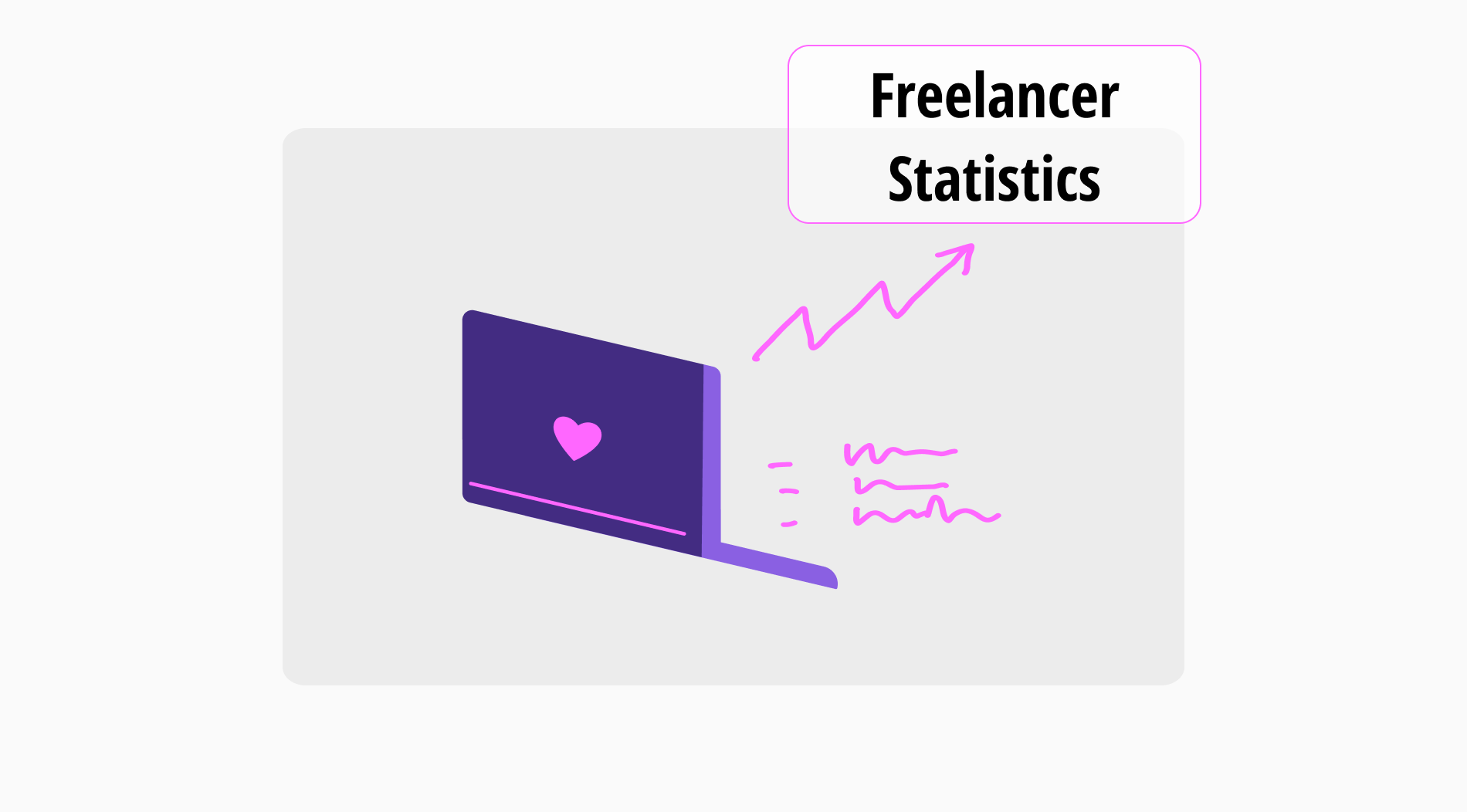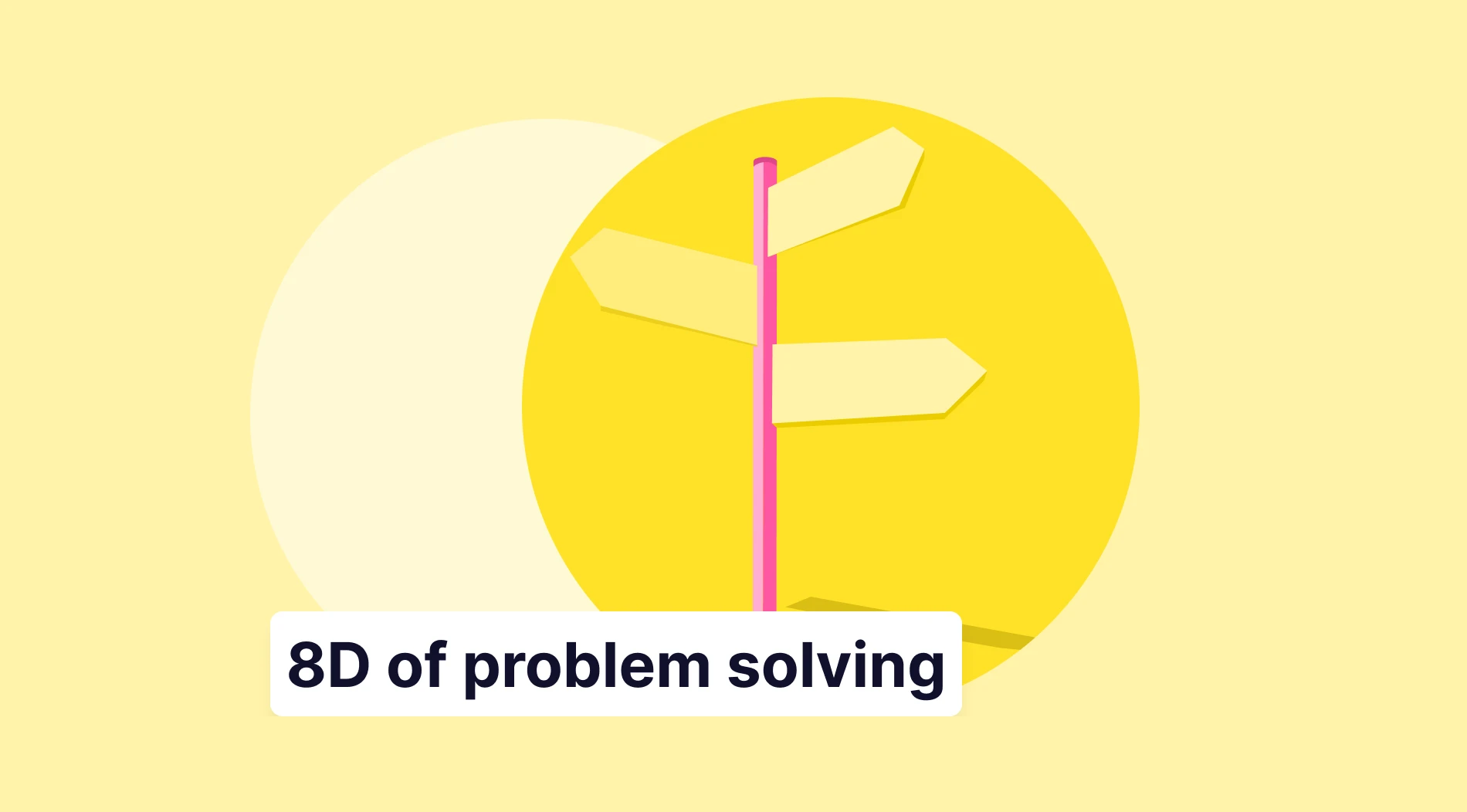The rapid development of technology and globalization has reduced the need for the traditional working model. The number of people working freelance is increasing every year. Freelancers can offer their services in their areas of expertise to the whole world. The freelancing model offers employees flexible working hours and the opportunity to work from home while providing employers with easy access to experts.
While traditional business models only give you access to employees in certain regions, the freelancing model does not restrict you in this regard. We have got 100+ freelancer statistics for you. Our freelance statistical analysis will help you understand the benefits of freelancing for both freelancers and companies. Thanks to statistics, you will be encouraged to employ freelancers. Now, let's examine the statistics!
100+ Eye-opening freelancer statistics for you
Thanks to the freelancing model, businesses can access a very large pool of employees. For this reason, businesses that employ freelancers have an advantage over their competitors in the sector that do not use a freelance working model. The categorized freelance industry statistics we have prepared will allow you to see more advantages of the freelancing business model. Here are 100+ freelancer statistics:
General statistics about freelancers
Thanks to general freelancing statistics, you will get a complete overview of freelancing and its benefits for your company. Learning the general outline of freelancing will guide you in getting help from freelancers. Here are general statistics about freelancers for your business to use:
1. There are 1.57 billion freelancers contributing to the global workforce (Exploding Topics).
2. According to 63% of freelancers, having a large and varied list of clients is safer than having only one (Zippia).
3. Up from 68% in 2021, nearly three-quarters of freelancers (73%) believe that opinions of freelancing as a career are growing increasingly favorable (Upwork).
4. 36.1% of freelancers work 10–20 hours per week (Demandsage).
5. In 2022, about 53 percent of freelancers in the United States are female freelancers (Statista).
6. In the US, half of 18 to 22-year-old people work as freelancers. With each older generation, that percentage gradually decreases until it reaches 26% for people who are 55 and older (Exploding Topics).
7. 45% of freelancers said they felt more secure in their jobs than when they were not freelancing. This is double the number of freelancers who said the opposite (Fiverr Workspace).
8. 55% of employers think hiring freelancers is more cost-efficient than traditional employing models (FinancesOnline).
9. According to research from 2018, 46% of freelancers reported having trouble getting paid by clients (Gitnux).
10. More than half (54%) of freelancers work five days a week (Demandsage).
11. In Europe, the proportion of female and male freelancers is approximately equal (Startup Bonsai).
12. To engage freelancers, 51% of recruiting managers would consider employing an online talent solution (FinancesOnline).
13. Personal development is the most important reason for 40% of freelancers to go independent (Fiverr Workspace).
14. A full-time freelancer typically works 43 hours a week (Demandsage).
15. 46% of freelancers who worked during the pandemic obtained employment from referrals from friends and family or previous clients (Zippia).
16. The average freelance hourly wage in the United States is 20 dollars, according to 2020 freelancer research statistics (Upwork).
17. According to 71% of respondents, people are beginning to view freelancing as a more desirable employment alternative (Startup Bonsai).
18. Around 70% of freelancers globally are under 35 years old (Exploding Topics).
19. 17 percent of freelance workers don't have health insurance (Zippia).
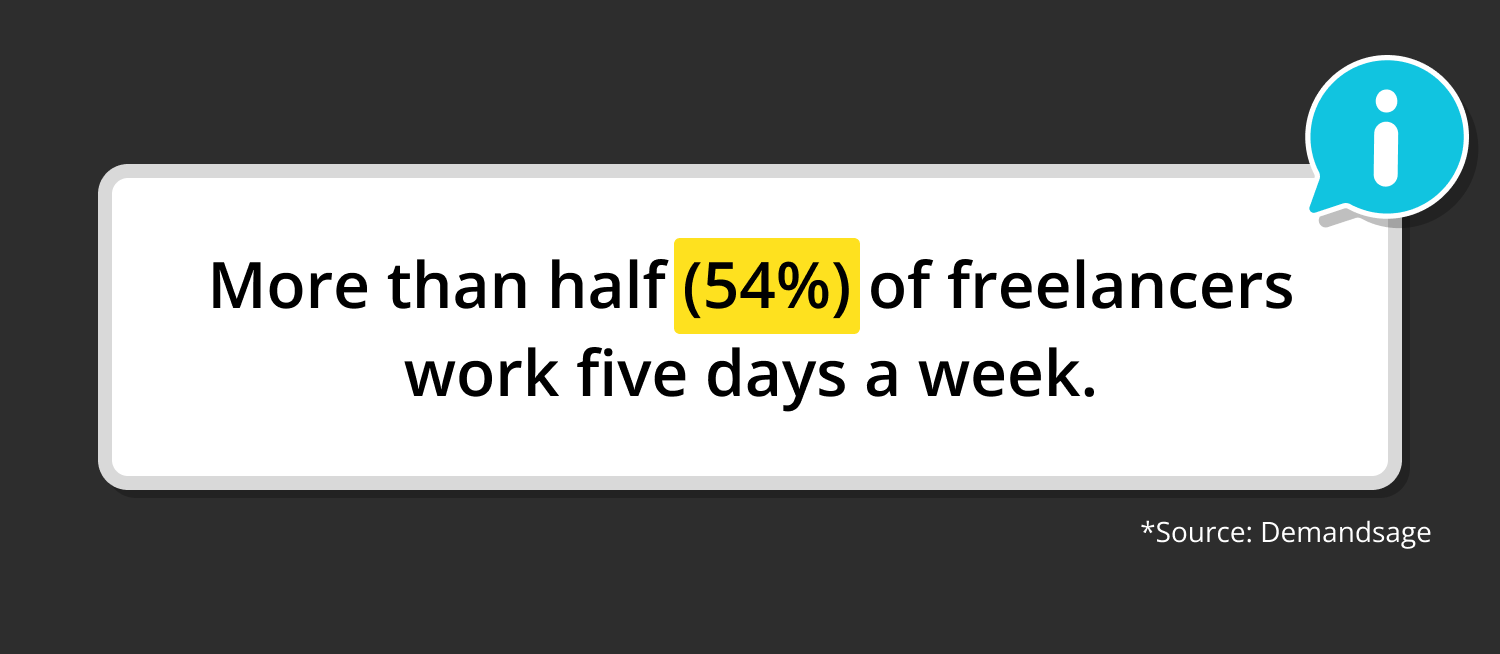
Source: Demandsage
Statistics about freelance writing
Freelancing is very popular among writers. This is because the freelancing business model gives employees the freedom to work flexible hours and serve different clients. The expansion of online platforms allows many writers to do freelancing work. Now, check out the statistics about freelance writing:
20. The average hourly rate for a full-time freelancer is 21 dollars worldwide (Exploding Topics).
21. According to a survey, 22.4% of authors who put in more than 25 hours a week make less than $3.000 (Jennifer Goforth Gregory).
22. In 2022, 46% of Millennials and 43% of Gen Z professionals worked freelance (Upwork).
23. All freelance writers earning over 100,000 dollars have been freelancing for at least two years, and 65% have been writing for over six years (Peak Freelance).
24. In the United States, 28.5 million freelancers claim they consciously selected freelancing as their long-term profession (Startup Bonsai).
25. In order to improve process transparency, 49% of the companies prefer to employ freelancers (FinancesOnline).
26. 81% of freelance writers report that they have not lost a single client due to clients turning to ChatGPT or other AI writing tools (Jennifer Goforth Gregory).
27. Over the previous year, more work has been received through online channels, according to 71% of freelancers (Gitnux).
28. A freelance writer makes between $30 and $40 per hour, or around $42,000 yearly (Upwork).
29. 36.9% of freelancers work freelance because they like being able to work from anywhere (Startup Bonsai).
30. 91% of people who have been freelance writers for less than a year make less than 30,000 dollars (Peak Freelance).
31. In the US, 82% of freelancers are writers, and 24% of them earn more than 50.000 dollars a year for their freelance services (Zippia).
32. From 2022 to 2032, the employment of writers and authors is expected to expand by 4%, which is roughly as fast as the average for all occupations (U.S. Bureau Of Labor Statistics).
33. The main motivation behind freelancing is profit. Other motivators included flexibility and the need for a stronger feeling of purpose in their work. 'To have freedom in my schedule' (73%) and 'to earn more money' (83%) are the top two reasons given for freelancing (Upwork).
34. In 2022, a freelance writer's typical fee for a blog post was between $250 and $399 (Peak Freelance).
35. Most freelance writers who make over 100,000 dollars a year charge at least 1000 dollars for each post (Smart Blogger).
36. With nearly a third expressing optimism, 82.4% of freelance writers are either slightly nervous or hopeful about the future of freelancing (Jennifer Goforth Gregory).
37. While the percentage of people who freelance with a high school diploma or less fell from 37% to 31%, over half of freelancers had postgraduate degrees, an increase of 6% from 2020 to 2021 (Exploding Topics).
38. 62% of companies hire freelancers because employers think that freelancers complete the projects faster (FinancesOnline).
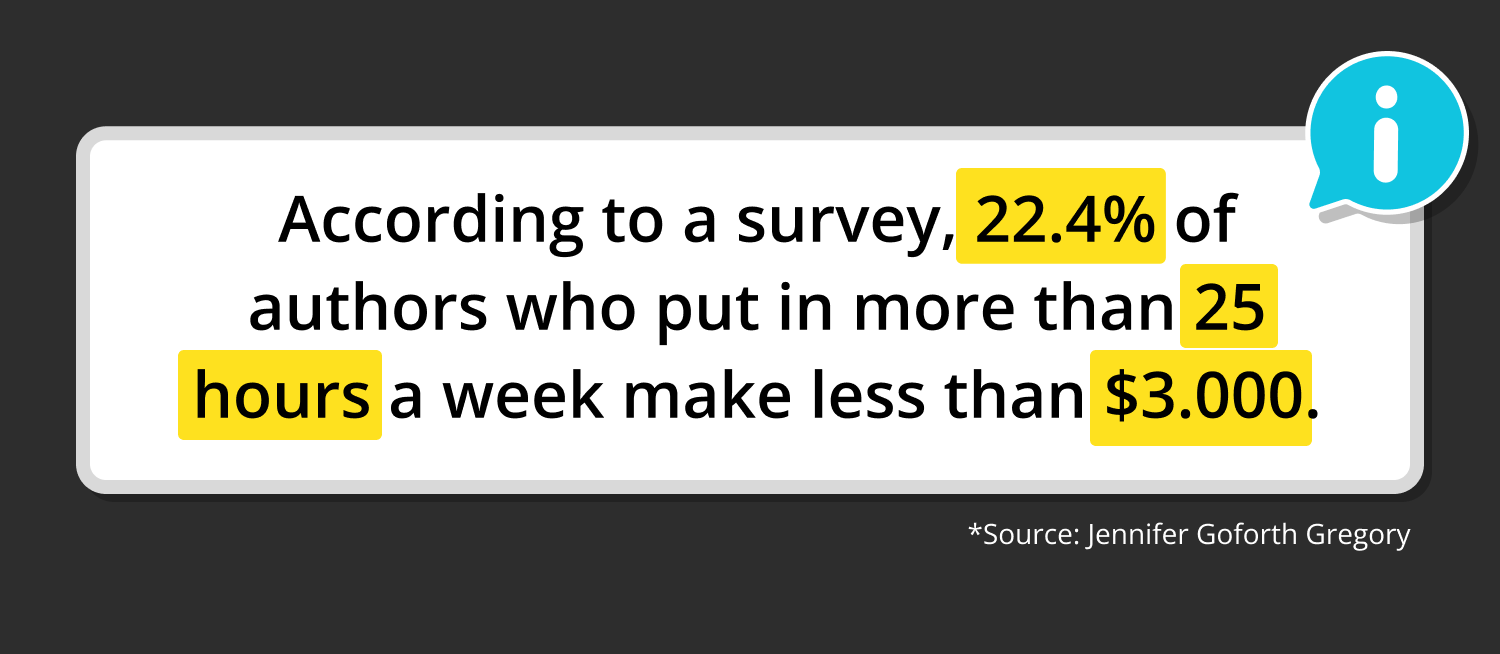
Source: Jennifer Goforth Gregory
Freelance market size statistics
One of the benefits of freelancing for companies is to reduce costs by getting project-based help from freelancers instead of hiring full-time employees. Reasons such as this have led to an increase in the size of the freelance market. Employers who want to keep up with the times should know this concept. Here are freelance market size statistics:
39. The estimated value of the global freelance platform market is 3.39 billion dollars (Exploding Topics).
40. By the end of 2030, the size of the freelance platform industry is expected to reach $9570.3 million (Demandsage).
41. 75% of freelancers earn the same or more money than they did in a traditional job (Zippia).
42. No matter how much money was offered, 50% of freelancers claim they would never quit freelancing to accept traditional employment and work full-time at an office (Upwork).
43. The average percentage of self-employment in low-income nations is 80%. In contrast, the average self-employment rate in high-income nations is only 12.4% (Exploding Topics).
44. In order to acquire skills that are momentarily unavailable, 49% of businesses prefer freelancers over staffing firms (FinancesOnline).
45. As of 2020, 61% of freelancers have two to three areas of expertise (Gitnux).
46. 6% of the Fiverr survey participants stated that they are freelancing until they find a full-time position (Fiverr Workspace).
47. The majority of people (59%) who do not now work as freelancers think they probably will at some point (Startup Bonsai).
48. With a compound annual growth rate (CAGR) of 15.3% from 2021 to 2027, the size of the global freelance platforms market is expected to increase from 3393.5 million dollars in 2020 to 9192.9 million dollars (Absolute Reports).
49. In 2016, the percentage of female freelancers surpassed that of male freelancers. Before 2016, fewer women were working as freelancers than men (Demandsage).
50. With the start of the COVID-19 epidemic in 2020, there was a nationwide increase in the number of freelancing workers in the US. Of the 12% of workers who began freelancing for the first time during the pandemic, 48% considered it a long-term, full-time employment option (Zippia).
51. According to a Fiverr survey, two-thirds of freelancers became independent in the last three years (Fiverr Workspace).
52. Referrals are how 64% of freelancers find work (Gitnux).
53. In the last three months, nearly 50% of small businesses employed freelancers, and 81% of them want to hire again in the future (Zippia).
54. Between 2000 and 2024, the proportion of self-employed workers fell from 55.5% to 46.6% (Demandsage).
55. US freelancers' yearly income increased by 100 million dollars in 2023 to reach 1.3 trillion dollars (Exploding Topics).
56. In the United States, 36% of the workforce that works as freelancers does so full-time on a long-term basis (Zippia).
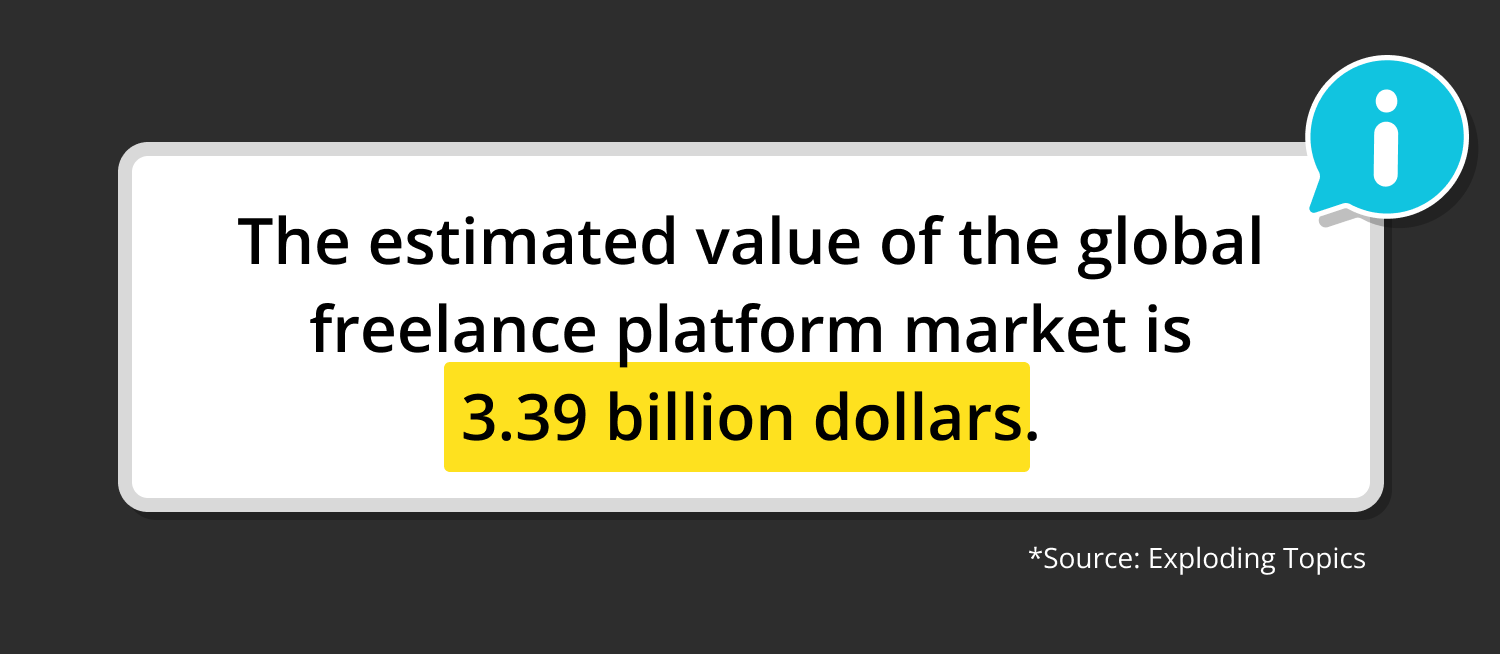
Source: Exploding Topics
Freelancer statistics by sectors
The widespread adoption of freelancing has enabled people with many different specializations to switch to this model. This has led to the adoption of the freelancing model by various sectors. Take a look at the freelancer statistics by sector to learn the freelancing data in the industry that you work in:
57. The freelance service with the highest demand is web design (Exploding Topics).
58. In 2022, around 31 million people, or 51% of all freelancers, worked in knowledge-based fields like business consulting, marketing, IT, and computer programming (Upwork).
59. With 40% of them spending between three and six hours a week and 33% spending more than seven hours a week, freelancers in the legal sector spend the most time looking for work (Zippia).
60. The industries where Polish freelancers were most commonly employed in 2022 were social media and copywriting. 17.6% of freelancers were graphic designers (Statista).
61. Freelancers use websites like Upwork, Fiverr, and LinkedIn the most to find work in the US (Oyster).
62. In 2018, 37% of small businesses reported using a freelance accountant (Business2Community).
63. The average salary for freelancers in marketing, legal work, accounting, web/mobile development, and other professional services is 28 dollars per hour. At an hourly wage of 28 dollars, these freelancers earn more than 70% of all American employees (Upwork).
64. About 28% of freelancers in the US had to stop their freelance work as a result of the pandemic. That represents almost 10% of the US workforce (Flexiple).
65. A freelance data analyst makes 100,000 dollars a year, averaging 55–65 dollars per hour on average (Upwork).
66. According to a Fiverr survey, only 5% of freelancers indicated they center their work around a specific skill set, and only 13% work with a single client at a time (Fiverr Workspace).
67. In 2018, 34% of small businesses required to hire a freelance web developer, while 43% of small businesses needed to hire a website or application designer (Business2Community).
68. More than 4 million Australians work as freelancers, and their most popular services include marketing, editing, and content creation (Oyster).
69. Freelance editors often make between 25 and 35 dollars per hour, or around 40,000 dollars a year (Upwork).
70. The percentage of freelancers among office and administrative support workers is only 19% (Exploding Topics).
71. The top-paid freelancers in 2019 were marketers, developers, and designers (Gitnux).
72. Over the following six years, freelance work will likely increase by 14% across all sectors (Zippia).
73. Approximately 28% of small businesses hired graphic designers in 2018, making graphic design the most popular opportunity in the art and design sector (Business2Community).
74. According to nearly 50% of freelancers, companies should offer more remote work options (Fiverr Workspace).
75. Freelancers in the programming and IT sectors spend the least time looking for work, with 54% spending just two hours each week (Zippia).
76. 37% of all professionals in the United States in 2022 worked for multiple jobs or on multiple contracts (Upwork).
77. A freelance programmer usually earns between 60 and 70 dollars per hour, or around 120,000 annually (Demandsage).
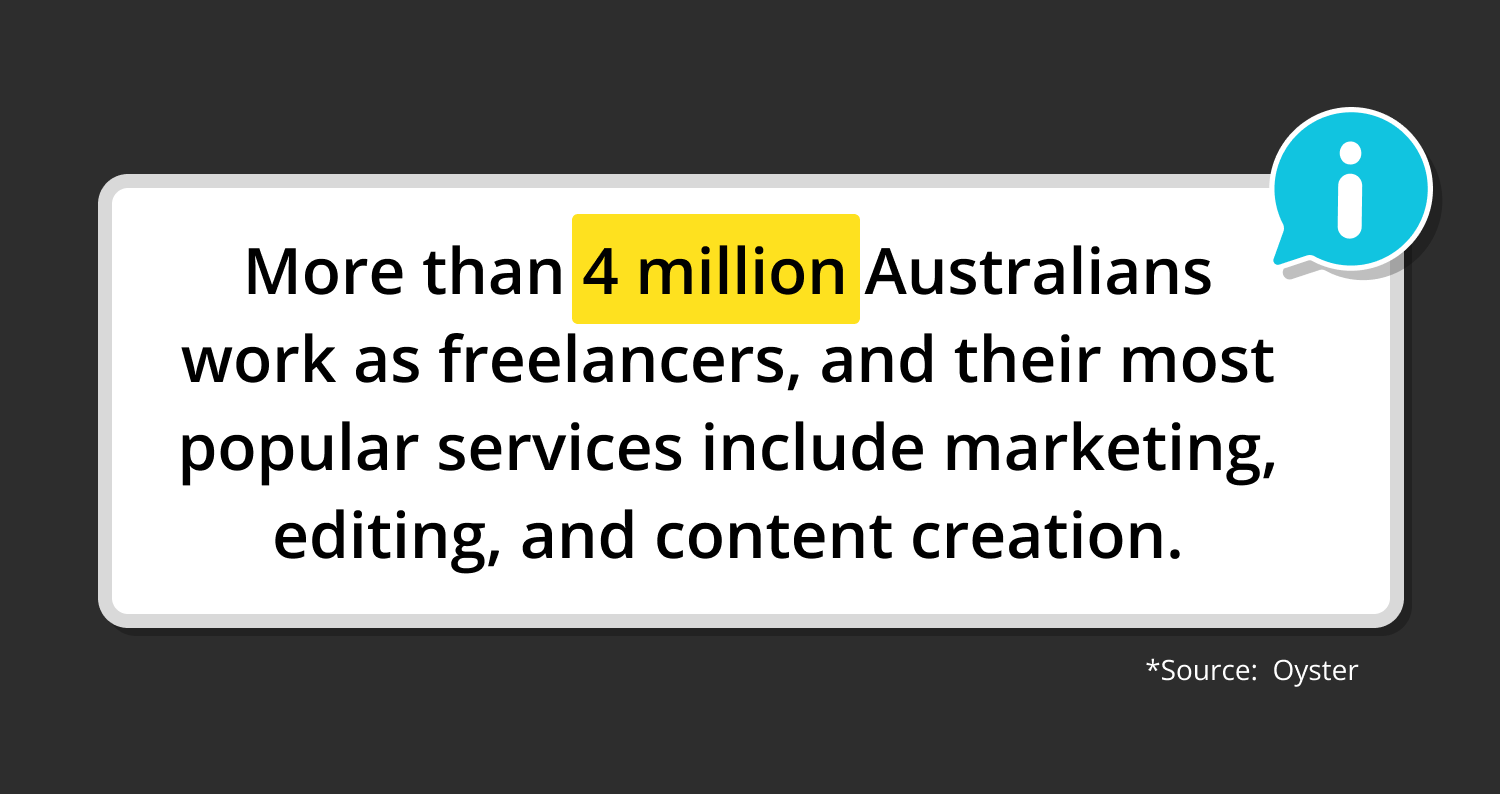
Source: Oyster
Freelancer statistics by country
With globalization, freelancing has become widespread around the world and can be seen in many countries. However, its prevalence varies from country to country. With freelancer statistics by country, you can make comparisons between different countries. Let’s move on to freelancer statistics by country:
78. Due to their large and varied marketplaces, the United States and the United Kingdom are the most popular locations for freelance jobs (Payoneer).
79. In India, there are about 15 million independent contractors, most of whom are under 25 (Being Assistant).
80. According to Upwork's 2022 Freelance Forward survey, 60 million Americans, or 39% of the country's workforce, worked as freelancers in 2021 (Upwork).
81. According to a survey done in 2023, almost two-thirds of freelancers in Russia made less than 30.000 Russian rubles a month. Less than 10% of freelancers earn more than 100.000 Russian rubles every month (Statista).
82. 2023 saw a 36% increase in the number of freelancers in Ukraine (Being Assistant).
83. In Pakistan, 77% of earnings came from freelancers under the age of 35, which is partially due to recent advancements in tech education (CNBC).
84. In 2024, 21 percent of employees in the US and the UK plan to do freelance work (Demandsage).
85. Freelancers are crucial to the success of the British economy, with an estimated £162 billion contributing to the nation's GDP (Payoneer).
86. Bangladesh is becoming increasingly known for its expertise in graphic design, web development, and content creation, making it a cost-effective place to hire freelancers. Employers are drawn to Bangladesh's 650,000 freelancers due to low labor costs (Oyster).
87. In the United States, freelancers serve an average of 4.5 clients every month, or 27 clients over six months (Zippia).
88. In the UK, the proportion of working mothers who work freelance has climbed by 55% since 2008 (Ipse).
89. In 2022, the yearly earnings of freelancers provided 1.35 trillion dollars to the U.S. economy, an increase of 50 billion dollars from 2021 (Upwork).
90. Serbia is one of the countries with the highest prevalence of freelance work, with earnings increasing by 19% (Being Assistant).
91. Since 2021, the number of freelancers in London, Scotland, and Northern Ireland has increased regionally (Ipse).
92. The largest challenge for Hungarian freelancers was instability. 43% of Hungarians surveyed cited the lack of financial security as the most difficult aspect of being a freelancer (Statista).
93. As more freelancers agree to work 40 hours per week, the demand for a freelance workforce is rising significantly in Ukraine (Oyster).
94. 83% of Brazilian freelancers intend to offer their services to new countries. France and Germany are the most favored destinations, despite obstacles including language barriers and lack of experience with foreign markets (Payoneer).
95. Roughly one-third of Japanese freelancers who participated in an online survey between September and November 2022 said they worked between 140 and 200 hours monthly (Statista).
96. The nation having the largest percentage of freelancers is Niger, with 95.1% (Exploding Topics).
97. In 2017, around 57.3 million Americans, or 36% of the labor force, were freelancers (Gitnux).
98. The percentage of workers who are freelancers is the lowest in Qatar. In Qatar, only 0.4% of employees are freelancers. There are also a limited number of freelancers in Belarus, Kuwait, Bahrain, and Oman (Demandsage).
99. The expected number of freelance workers in the United Kingdom in 2022 was 1.89 million, up from 1.86 million in 2021. From just 1.39 million workers in 2008, the number of freelancers in the UK increased to 2.16 million at its peak in 2020 (Statista).
100. The gig economy in Pakistan has grown significantly in the last few years, with export remittances from freelancers in the nation totaling about 400 million dollars in 2021–2022. This is approximately 15% of Pakistan's 2.616 billion dollars in ICT export remittances over the same period (Payoneer).
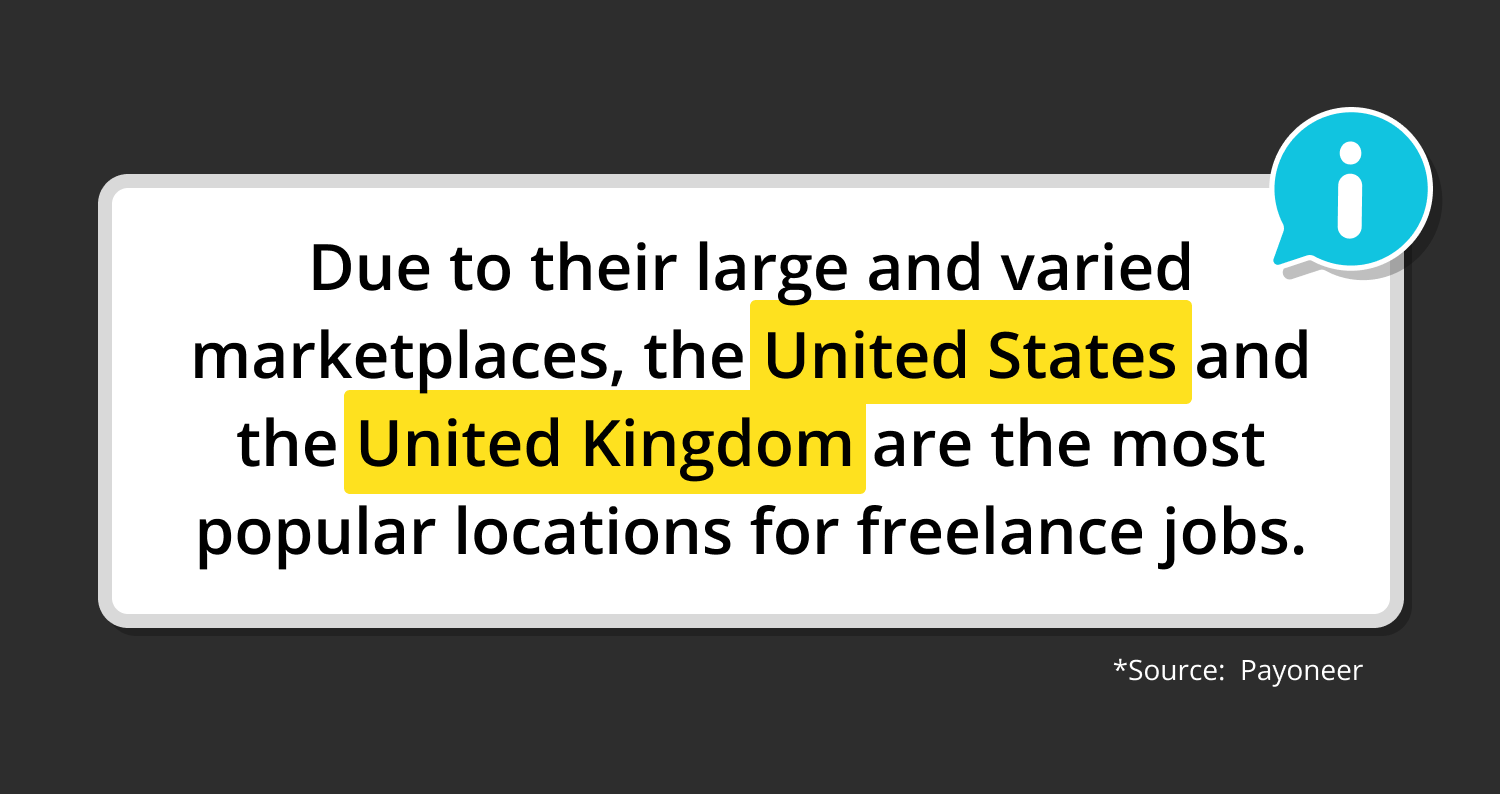
Source: Payoneer
Final words
Increasing digitalization has minimized the need for traditional working systems and the need for offices. This has led to the emergence of the freelance working system. Freelancing has numerous benefits for both companies and employees. We have compiled 100+ freelancing statistics for you. Reviewing the statistics we have compiled will provide sufficient information on the subject and eliminate your reservations.
Now you know what freelancing is and how to benefit from it, you can get help from freelancers in your company!
forms.app, your free form builder
- Unlimited views
- Unlimited questions
- Unlimited notifications
